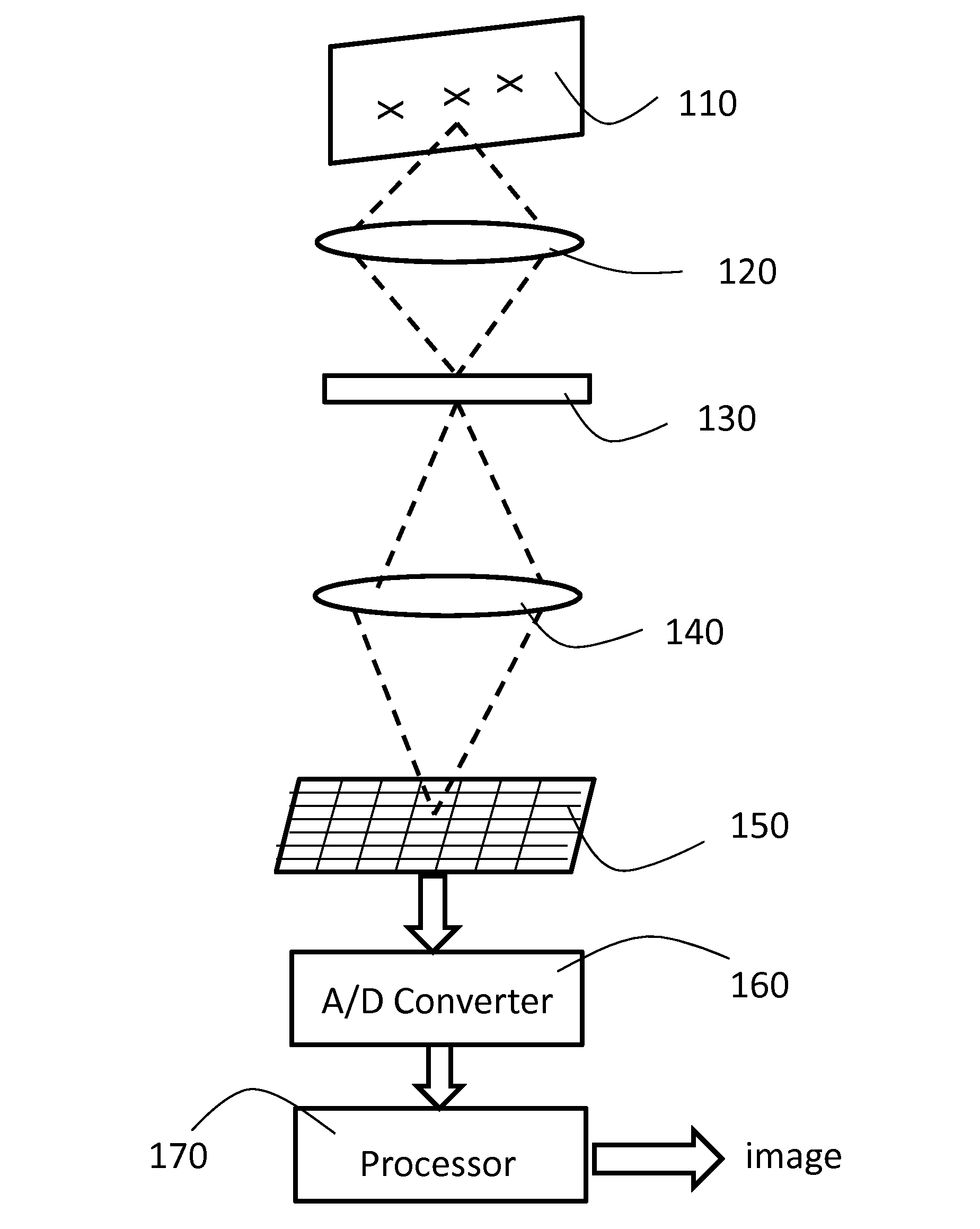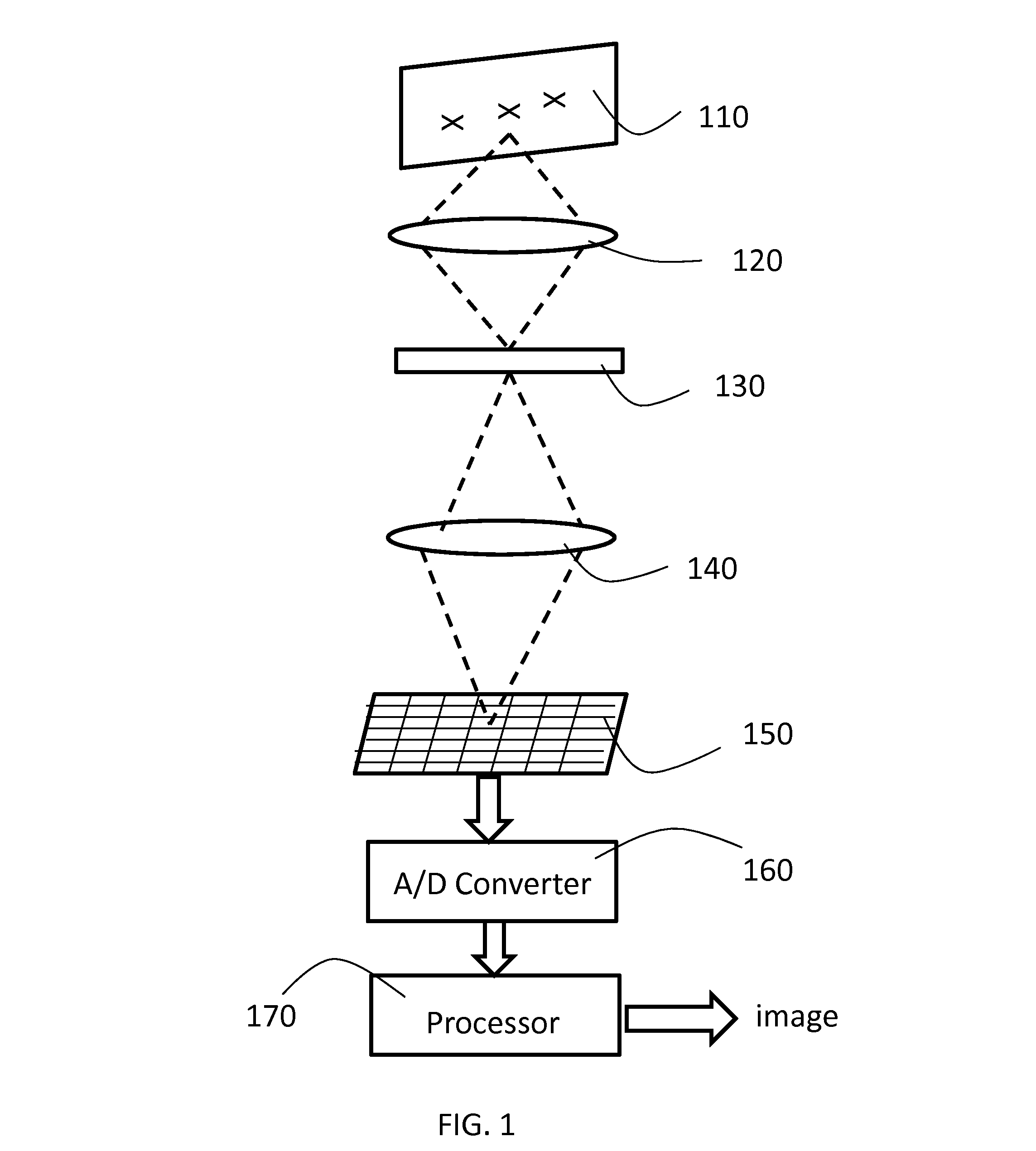Number Of Pixels In Detector Arrays Using Compressive Sensing
- Summary
- Abstract
- Description
- Claims
- Application Information
AI Technical Summary
Benefits of technology
Problems solved by technology
Method used
Image
Examples
Embodiment Construction
[0020]After fabrication, a large fraction of integrated circuits fail for various reasons. A key technique for finding the root cause of the failures is to analyze infrared images of the devices. Such devices contain hundreds of millions of transistors, each of which could emit light that points to the root cause. However, detector arrays currently available and those available in the foreseeable future have less than 1 Mpixel. Thus, one is forced to take multiple images of an integrated circuit (IC) at high magnification (and lower field of view) in order to precisely locate defect spots. The inventive technique disclosed here boosts the effective pixel count of the detector array by a factor of easily 10 and conceivably up to 104 or more. This would allow one to accomplish single-FOV imaging of an entire die in the semiconductor application space. Any image in which a pixel count significantly higher than the number of elements available in an array is required could benefit from ...
PUM
 Login to View More
Login to View More Abstract
Description
Claims
Application Information
 Login to View More
Login to View More - R&D
- Intellectual Property
- Life Sciences
- Materials
- Tech Scout
- Unparalleled Data Quality
- Higher Quality Content
- 60% Fewer Hallucinations
Browse by: Latest US Patents, China's latest patents, Technical Efficacy Thesaurus, Application Domain, Technology Topic, Popular Technical Reports.
© 2025 PatSnap. All rights reserved.Legal|Privacy policy|Modern Slavery Act Transparency Statement|Sitemap|About US| Contact US: help@patsnap.com


